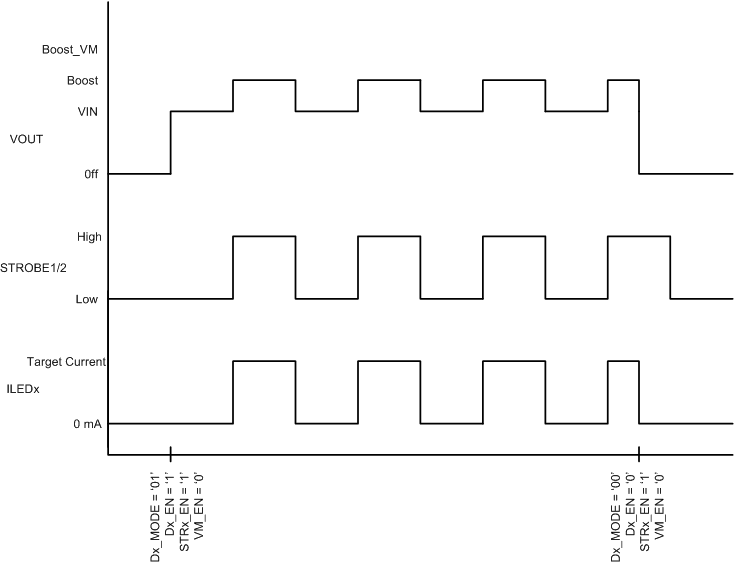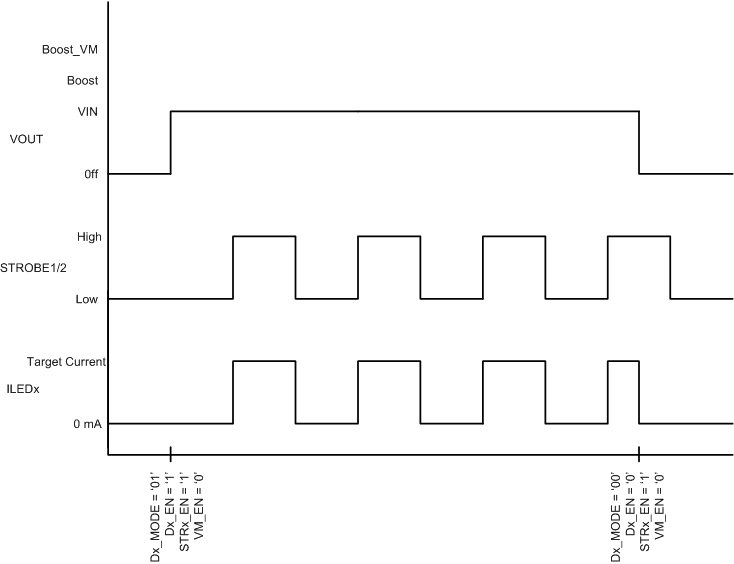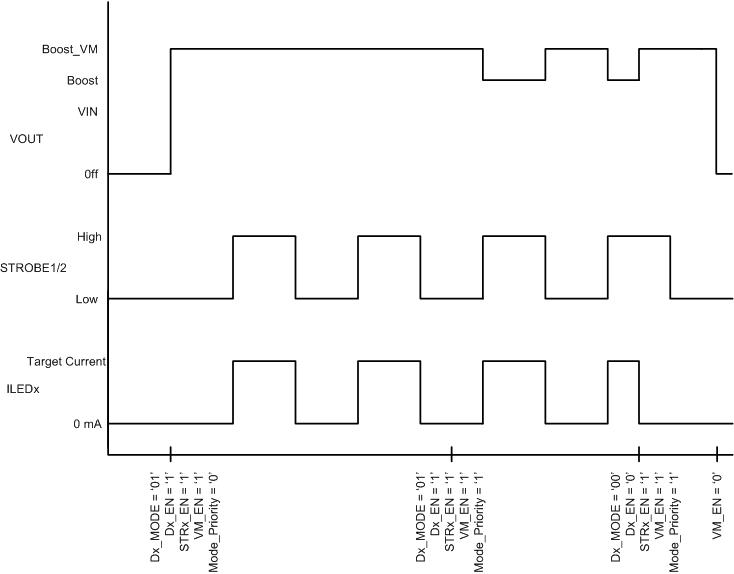SNVSCV4 September 2024 LM3645
PRODUCTION DATA
- 1
- 1 Features
- 2 Applications
- 3 Description
- 4 Pin Configuration and Functions
- 5 Specifications
-
6 Detailed Description
- 6.1 Overview
- 6.2 Functional Block Diagram
- 6.3
Feature Description
- 6.3.1 Power Amplifier Synchronization (TORCH/TX)
- 6.3.2 Input Voltage Flash Monitor (IVFM)
- 6.3.3
Fault/Protections
- 6.3.3.1 Fault Operation
- 6.3.3.2 Flash Time-Out
- 6.3.3.3 Overvoltage Protection (OVP)
- 6.3.3.4 Current Limit
- 6.3.3.5 NTC Thermistor Input/Outputs (TEMP1, TEMP2)
- 6.3.3.6 Thermal Scale Back
- 6.3.3.7 Thermal Shutdown (TSD)
- 6.3.3.8 Undervoltage Lockout (UVLO)
- 6.3.3.9 LED and/or VOUT Short Fault
- 6.3.3.10 Fault Behavior Table
- 6.4 Device Functioning Modes
- 6.5 Programming and Control
- 6.6 Register Descriptions
- 7 Application and Implementation
- 8 Power Supply Recommendations
- 9 Layout
- 10Device and Documentation Support
- 11Revision History
- 12Mechanical, Packaging, and Orderable Information
6.4.3 IR Mode
In IR Mode, the target LED current is equal to the value stored in the LED1/2/3/4 Flash Brightness Registers. When IR mode is enabled on any of the outputs, the boost converter turns on and set the output equal to the input (pass-mode) or to the selected voltage mode depending upon the state of the voltage mode settings. At this point, toggling the STROBE pins enables and disables the LED1/2/3/4 current sources (if enabled via the Dx Mode bits). The strobe pins can only be set to be Level sensitive, meaning all timing of the IR pulse is externally controlled. If the strobe pin is set to edge mode, the LM3645 device times out after the end of the set duration. In IR Mode, the current sources either ramp quickly or do not ramp the LED outputs to the target based upon the ramp time setting chosen.
 Figure 6-6 IR Mode with Boost
Figure 6-6 IR Mode with Boost Figure 6-7 IR Mode Pass Only
Figure 6-7 IR Mode Pass Only Figure 6-8 IR Mode Voltage Mode Enabled
Figure 6-8 IR Mode Voltage Mode Enabled